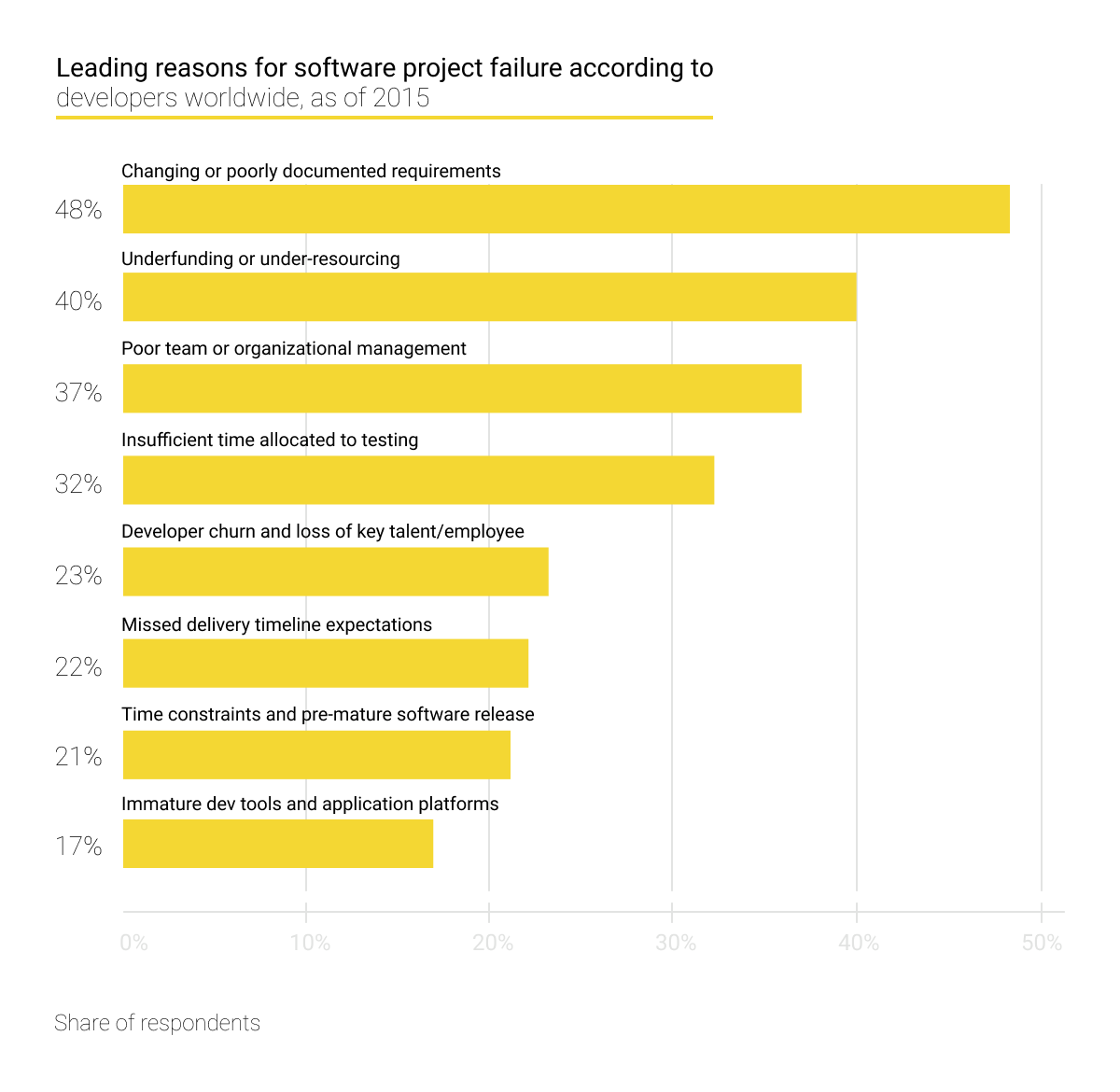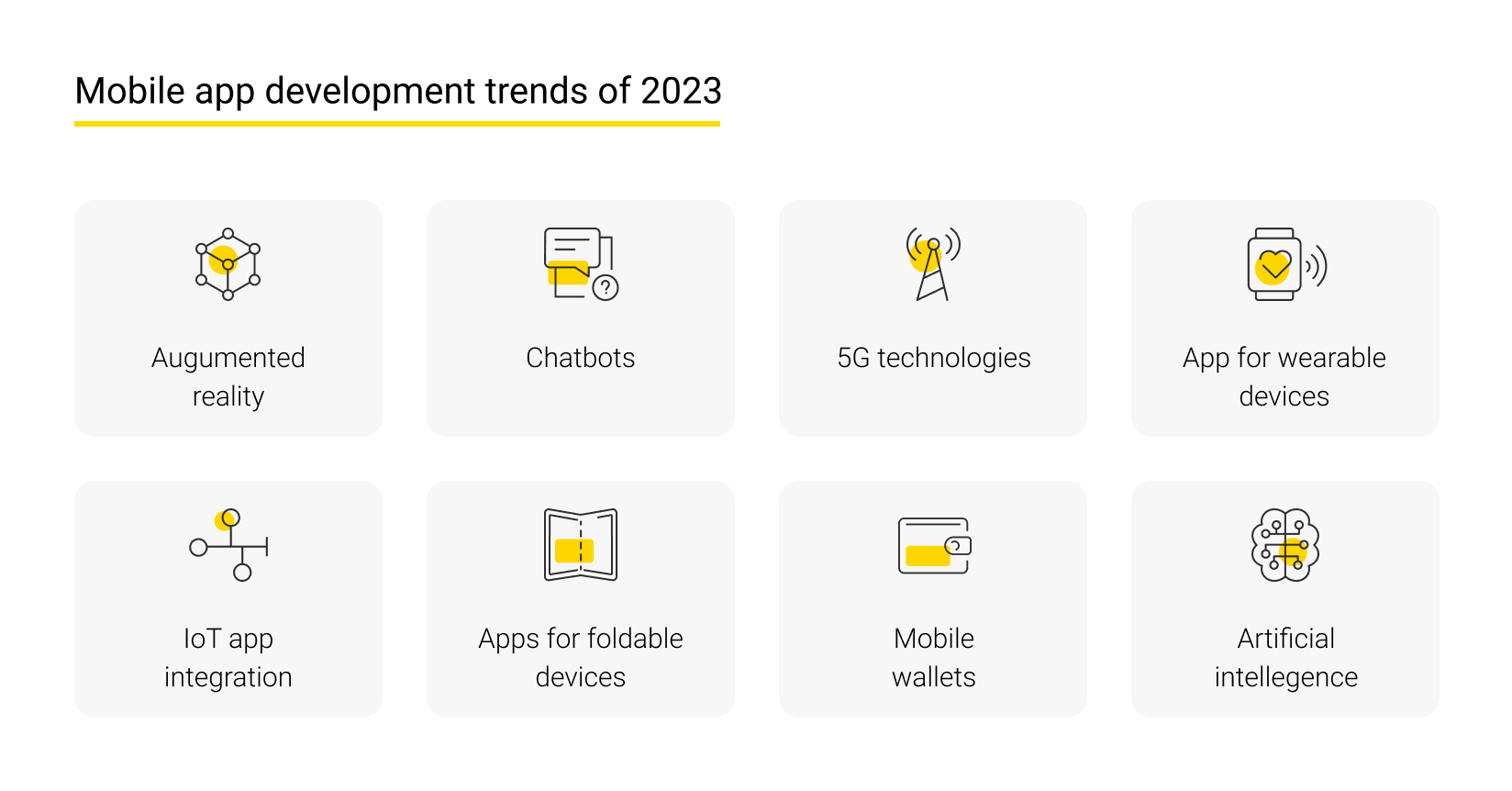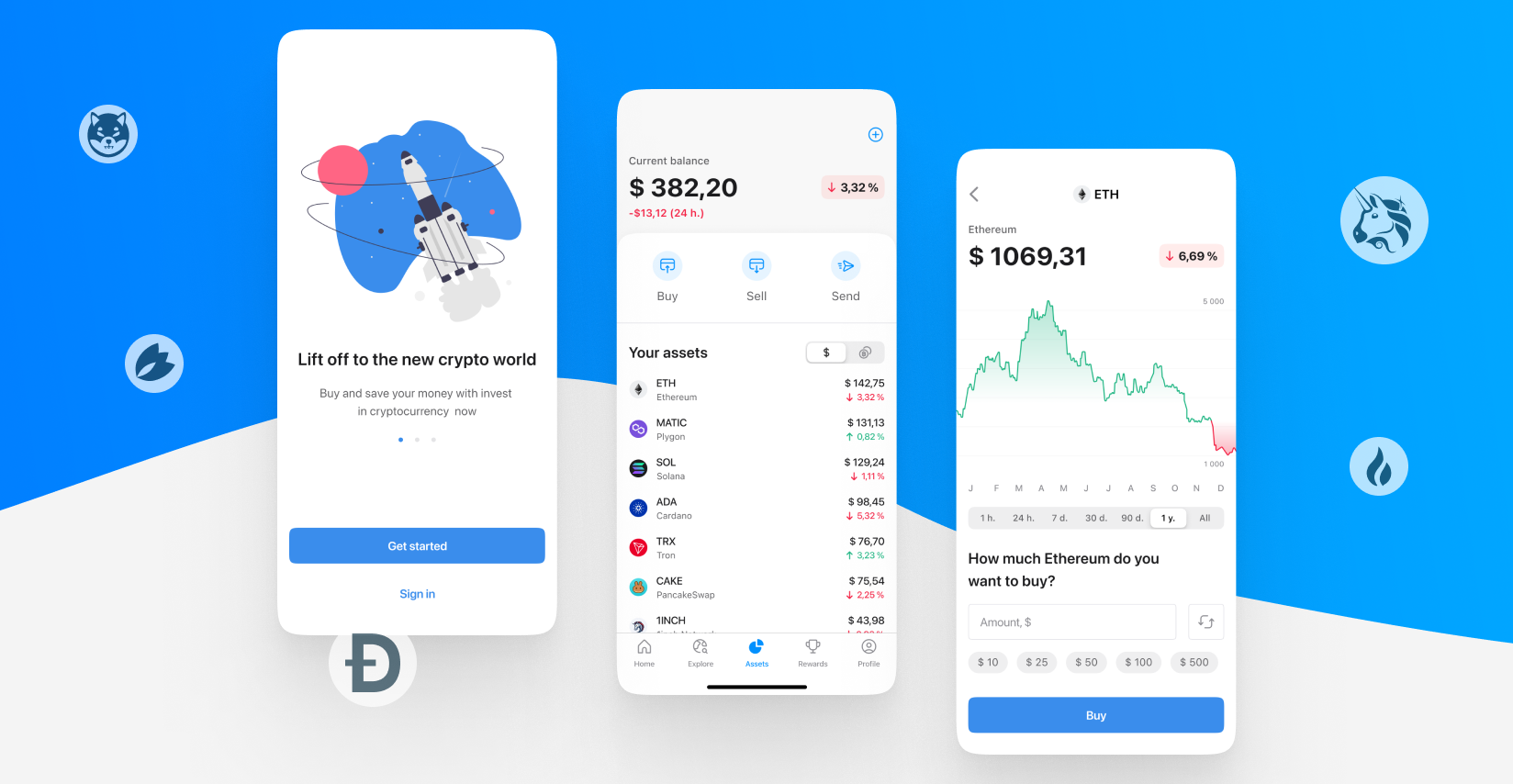- Cross-platform app development: some figures to consider
- Cross-platform or native: what is the difference?
- Benefits of cross-platform app development
- Balancing the pros and cons of cross-platform app development
- How to develop a cross-platform app
- Define your idea and objectives
- Build and test prototypes
- Pick the right technology
- Development: MVP and iterations
- Launch and enhance your product
- Exploring cross-platform app development trends with Andersen
Cross-platform app development—today's topic—is a meaningful IT trend. What are its pros for modern companies? And what about the cons? According to Andersen's experts, this approach involves intentionally developing solutions that can work on different operating systems and devices with a single, unified codebase. In this piece, we’ll touch upon its advantages and disadvantages.
Any aspiring company needs a stable and working digital product. But mobile solutions can be created as native as well. To get a good application and attract as many users as possible, you should evaluate the pros and cons of cross-platform app development and understand if it is the right option in your specific case.
Cross-platform app development: some figures to consider
The most important thing about this approach is that a business gets an app that runs impeccably on various OSs. That’s why building such products is a trend worth considering. When embracing it, you reap major budget benefits. One engineering team can support various solutions, so you don’t need to involve many specialists for different software versions.

But how prevalent is this trend in the IT sector nowadays? It's challenging to pin down precise adoption figures, given the multitudes of apps and programmers creating them globally. However, rough estimates offer interesting insights. Per recent surveys, around one third of IT professionals have now unlocked the benefits of cross-platform tools. This indicates that the pros are really convincing for many specialists.
Current IT trends speak for themselves. Thus, a 2021 ranking revealed that:
- 42% of developers choose Flutter
- 38% employ React Native
- 16% prefer Cordova
- 16% tap into Ionic
- 11% opt for Xamarin

This breakdown shows the diversity of tech stacks within the cross-platform ecosystem. While no single framework gives maximum value and minimum disadvantages, IT professionals can easily assess various options and pick what brings you maximum benefits.
Cross-platform methodologies are now mainstream. They enable organizations to cut expenses and make the development process easy. But within this trend, there remains vibrant competition in terms of specific tech stacks.
Cross-platform or native: what is the difference?
When examining cross-platform app development trends, you will definitely come across one old dilemma. Should you benefit from an app created for a certain OS or employ a hybrid approach relying on the same codebase across various systems? You can find ardent proponents on both sides of the argument, so let's look at the most important considerations.
Performance is often cited among the key pros of iOS and Android products. These apps usually have impeccable speed and deliver smooth, lag-free UX—and these are considerable benefits. Hybrid apps running interpreted code may suffer performance hits, which is among the significant cons. However, innovative cross-platform frameworks have considerably diminished this. Benchmarks show lightweight hybrid apps can now achieve impressive performance, with almost no drawbacks.
The usage of platform capacities is one more benefit. Thanks to native SDKs, you can use the camera, Bluetooth, fingerprint scanning, etc with optimal outcomes. In the case of hybrid software, some features aren’t accessible at all.
Delivering an impeccable UI design is another meaningful trend. This has raised serious concerns for specialists creating cross-platform systems. Because web components are employed, the UI here has a different appearance compared to iOS and Android products. However, frameworks like Flutter utilize native system widgets to achieve a platform-specific appearance. Clever design can make hybrid UIs feel consistent with platform-specific products.
Specialists with different team roles mention one more peculiarity that directly affects their work. Having one codebase for multiple platforms leads to faster development cycles than creating separate apps for each OS. Mastering various languages is more challenging than learning just one.
So, there are advantages and disadvantages on both sides. The choice depends on the app’s functional and performance requirements, development deadlines, and money an organization can allocate to a project. For basic apps that don’t need complex customizations or real-time performance, the cross-platform approach can bring benefits. For feature-rich apps pushing device limits, the native approach may be preferable. However, innovative cross-platform frameworks keep on closing the capability gaps. Balancing the pros and cons requires a thorough evaluation of an app's unique peculiarities.
Benefits of cross-platform app development
So, one cannot ignore the cross-platform trend nowadays. Now, let's examine the benefits in more detail. What's driving teams to opt for this approach?
Boundless options
We have already listed top frameworks like Flutter, but the possibilities are endless. There is an abundance of tools to choose from. With numerous choices, businesses can select ideal tools for their needs and readily find developers skilled in a specific tech stack.
Cost savings
Every company wants to maximize revenue while minimizing expenses. By consolidating development under one cross-platform team instead of separate teams per OS, a company can achieve major cost savings. This is an essential benefit.
Expanded outreach
Addressing the needs of iOS users alone misses the huge Android audience, and vice versa. A limited number of users can become a tremendous disadvantage. Cross-platform applications enable businesses to tap into the entire mobile audience from the very beginning.
Speed
Products can be launched faster without juggling multiple parallel development streams. This impressive time-to-market is a must for competitiveness.
Continuity
Unified code makes it easier to maintain continuity. Updates and new features effortlessly spread across different platforms. Knowledge sharing prevents dependency on individual team members. The likelihood of errors decreases, and they become easier to correct.
The benefits of cross-platform app development are impressive. By unlocking the rich functionality of cross-platform apps, organizations are positioning themselves for efficiency, flexibility, and market expansion. When employed strategically, this approach yields pros that impact both the development and business outcomes. Everyone benefits in this case.

Balancing the pros and cons of cross-platform app development
Apart from the apparent technical benefits of this development method, any company should be aware of the business-related disadvantages. Like any approach, this one also has its limitations to weigh. To create successful applications that will easily find acclaim among users, businesses must evaluate both pros and cons of cross-platform app development, with their unique requirements and goals taken into consideration.
Specifically, the size of an organization directly influences these particular needs. Therefore, this method is optimal for creating MVPs to validate ideas. These only require essential features, so customizing code for each platform is unnecessary. This enables emerging firms with limited budgets to test concepts quickly across iOS and Android. Native development would take too long and cost too much—obvious cons for businesses that want to outperform others.
For startups, this development trend can become a matter of survival. Such firms are at the very start of their journey and don’t have a reputation or a vast user audience. So, poor software is not just an ordinary disadvantage, it can ruin a company. With numerous rivals offering great products, they need to create digital solutions quickly and seamlessly.
Now, let’s look at the potential drawbacks in detail. Being perfectly aware of all cons helps business owners to make sound choices when weighing options. Based on extensive experience and knowledge of the latest trends, Andersen’s engineers highlight the key disadvantages:
Performance challenges
- Code not optimized for a specific OS can suffer performance problems from incompatible APIs and UI libraries
- Inefficiencies and lag are considerable cons
- Extra testing and tuning are required to achieve smooth responsiveness comparable to iOS and Android solutions
Restricted platform access
- Cross-platform apps cannot fully leverage exclusive device capabilities
- Insufficient support for emerging OS features is another disadvantage
- User experience suffers without pixel-perfect UI/UX design tailored to each platform's interface guidelines
Security weaknesses
- Bypassing native frameworks means losing built-in protection mechanisms
- More vulnerabilities can be introduced when not adhering to platform-specific security controls
- Additional risk management is needed when incorporating non-optimized code and dependencies
Delayed updates
- New native OS capabilities must be back-ported through abstraction layers before cross-platform code can adopt them
- iOS and Android products instantly inherit new features, while hybrid ones wait on framework updates
- More coordination overhead to sync major updates across codebases
So, do the cons outweigh the pros? With a smart strategy, you can minimize disadvantages. For software not needing advanced functionality, the benefits often prevail. But you should weigh tradeoffs carefully against your requirements. With proper execution by an expert vendor fully aware of the latest IT trends, cross-platform development is a viable option.
How to develop a cross-platform app
The development of an app that shows impeccable performance across numerous platforms and doesn’t have considerable disadvantages is challenging. Follow these steps for impressive outcomes:
Define your idea and objectives
Thorough planning and research are vital upfront:
- Analyze the users you want to attract and conduct competitor research to identify gaps, opportunities, industry trends, and potential benefits and disadvantages of your application
- Clearly outline the key purpose and goals of your app. What user needs will it meet?
- Outline the key functions necessary to deliver value
- Document your concept, so the vision is clear to your team
Setting clear objectives and requirements early on helps establish the right direction and focus.
Build and test prototypes
With your concept defined, start prototyping:
- Create wireframes and mockups to visualize app structure and design
- Employ prototyping tools to simulate functionality and workflows
- Test prototypes with target groups to get feedback
- Refine based on insights from prototypes before writing a single line of code
Prototyping validates your app idea and allows you to avoid missteps.
Pick the right technology
Next, pick the appropriate tech stack:
- Research the main trends and leading frameworks and languages
- Compare their pros and cons, capabilities, limitations, and learning curves
- Select the framework that perfectly addresses your app’s goals and team's abilities
- If necessary, consider using custom plugins to enhance device capabilities
Efficiency and quality depend on selecting the appropriate tech stack.
Development: MVP and iterations
Once the tech stack is chosen, launch the development itself:
- Focus initial builds on an MVP with only core features
- Add capabilities iteratively based on UAT and feedback (pay special attention to reported disadvantages)
- Check if the codebase functions properly on all intended OSs
- Customize the UI individually for each OS
The use of an incremental MVP approach lowers risk and prevents potential disadvantages.

Launch and enhance your product
Transition to deployment once the development stage is over:
- Publish your app across various app stores
- As promoting software through social media is an important trend, stick to this practice together with PR, influencers, and ads for optimal outcomes
- Examine disadvantages of software adoption and user reviews to steer enhancements
- Plan ongoing development sprints to expand functionality
- Keep iterating based on real user data to boost retention
Following these steps helps streamline cross-platform development with maximum impact and minimum cons. If you know how to make an app cross-platform, you hold the key to a widely acclaimed solution.
Exploring cross-platform app development trends with Andersen
Our company possesses extensive knowledge of various programming languages and frameworks. Andersen offers cross-platform development services, and our specialists will turn any idea into a stable solution.
Andersen’s experts know how to develop a cross-platform app of any complexity. They have mastered all the major tools and languages. They can offer flexibility in choosing the right ones to meet your unique requirements.
With a watchful eye on cross-platform app development trends, we deliver innovative systems for various branches:
- IoT and wearables
- Logistics and transportation solutions working offline and online
- Enterprise systems with both consumer-grade UX and complex data syncing
- mCommerce platforms responding to the latest trends (payment integration, robust security, etc.)
- Engaging consumer solutions with impeccable interfaces
With over 120 in-house specialists perfectly aware of modern IT trends and the pros and cons of cross-platform app development, you gain access to an expansive talent pool to make your vision a reality. By working together, we can build something greater than the sum of its parts. Connect with us to unlock the full potential of your company with innovative software.



